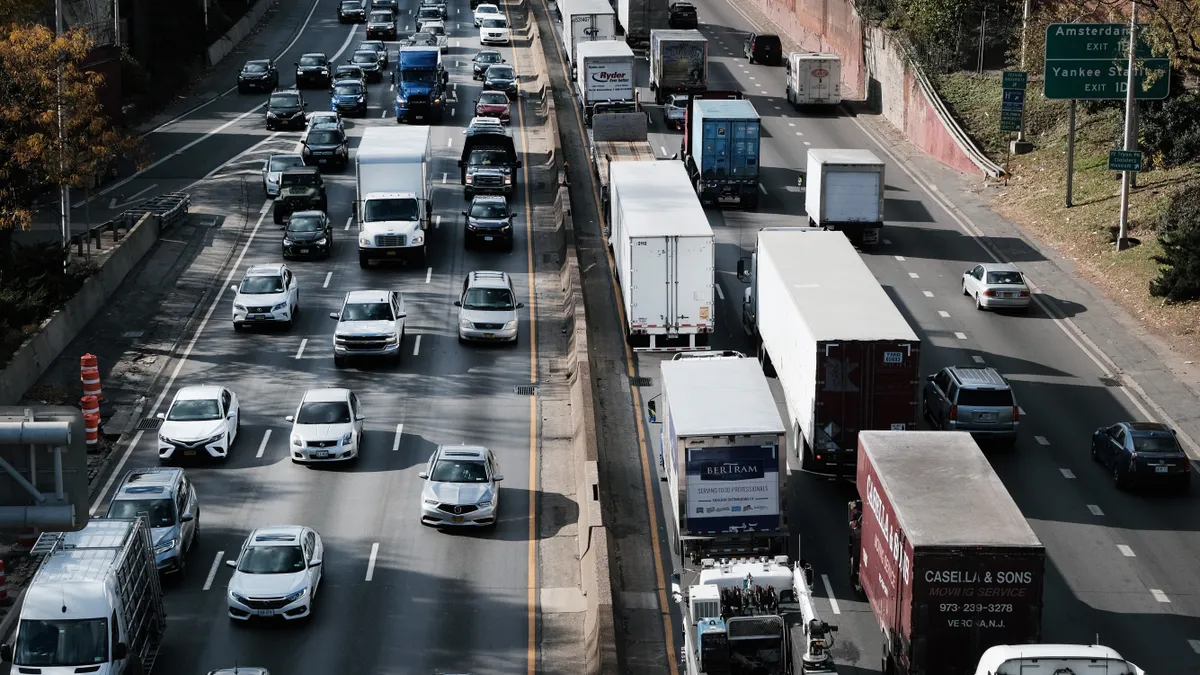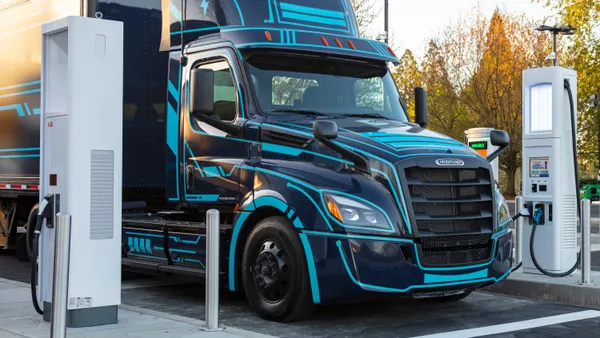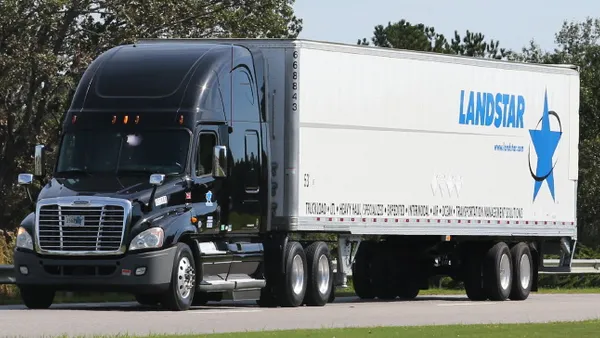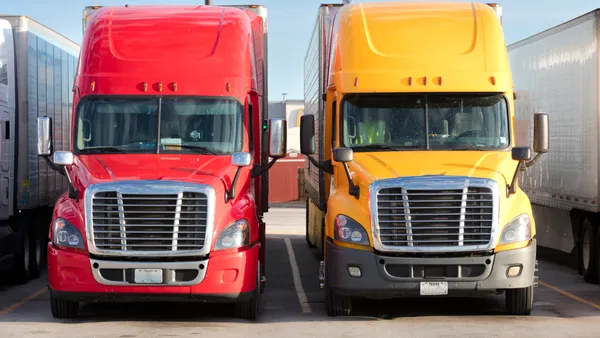Dive Brief:
- The nation's bottlenecks slowed truck traffic by 11.2% in the past year, with peak-hour truck speed dipping to 38.6 mph, according to the American Transportation Research Institute's annual report on bottlenecks.
- The top bottleneck, for the fourth year in a row, is Interstate 95 at State Road 4 in Fort Lee, New Jersey. Speed there slowed down 28.2% from 2020, ATRI reported. Georgia, California and Texas all have the distinction of having two bottlenecks in the nation's top 10.
- As more freight travels through the nation, bottlenecks have vexed traffic in populated areas in the nation's central part. Texas leads the nation with 14 interchanges in the top 100, according to ATRI. Of those 14, 10 bottlenecks are in the Houston region.
Dive Insight:
During the first year of the COVID-19 pandemic, traffic congestion cleared up in many places as workers and students stayed at home. Congestion fell almost 50% across major U.S. cities in 2020, according to Inrix.
But as pandemic-driven lockdowns went away in 2021, and with freight rebounding, trucks began slowing down from their 2020 averages at peak-traffic times.
When trucks slow down at bottlenecks, or stop completely, it takes hours out supply chain efficiency, said Rebecca Brewster, ATRI COO and president.
Change at the bottlenecks can be fixed with operational or expansion efforts, said Brewster. In Houston, Texas, government authorities are spending $7 billion for fixes such as highway widening, and related efforts to control better the flow of local traffic.
At Fort Lee, New Jersey, it would be difficult to add road expansions to an already developed area, said Brewster. One operational fix could be allowing one level of the George Washington Bridge to accommodate trucks, and another level to accommodate cars, she said.
The infrastructure bill signed by President Joe Biden could aid expansion and operational efforts. Brewster said the ATRI list could help focus attention by lawmakers and policymakers on the most troubled spots. It's worked before. Brewster said there are a few examples of being listed prominently on ATRI's list of the Top 100 bottlenecks that brought change.
A former No. 1 bottleneck, Chicago's Jane Byrne Interchange at I-290 and I-90/I-94, sat on the top for years. Former Illinois Gov. Pat Quinn disliked the ranking so much, he pushed for funding to ease the problems, Brewster said. In the 2022 report, the Jane Byrne Interchange now ranks at No. 6.
This time, the big problems have caught the attention of Texas. The Lone Star State has 14 in the top 100, and 10 are in the Houston region.
"Texas is used to being ranked No. 1, but this is one list we are not proud to be on top of," said John Esparza, president and CEO of Texas Trucking Association, in a news release. "Bottlenecks around the state continue to waste time and money, further damaging the already fragile supply chain. With the newly available federal resources for infrastructure projects, there is no excuse — these bottlenecks must be addressed."
Brewster said Texas and Georgia have always been problematic, but their bottlenecks appear to be getting worse, when average speeds are observed.
The long-troubled "Spaghetti Junction" of Atlanta, Georgia, at I-285 and I-85, ranks at No. 4. Drivers average 38.9 mph going through the junction. In 2021, speed slowed down 11.7% from 2020, ATRI data found.
By comparison, average speed at the No. 1 bottleneck, Fort Lee, New Jersey, dropped 28.2% from 2020. The Fort Lee, New Jersey interchange leads to the oft-traveled George Washington Bridge that leads into Manhattan. About 300,000 vehicles use the bridge every day, according to NorthJersey.com.












